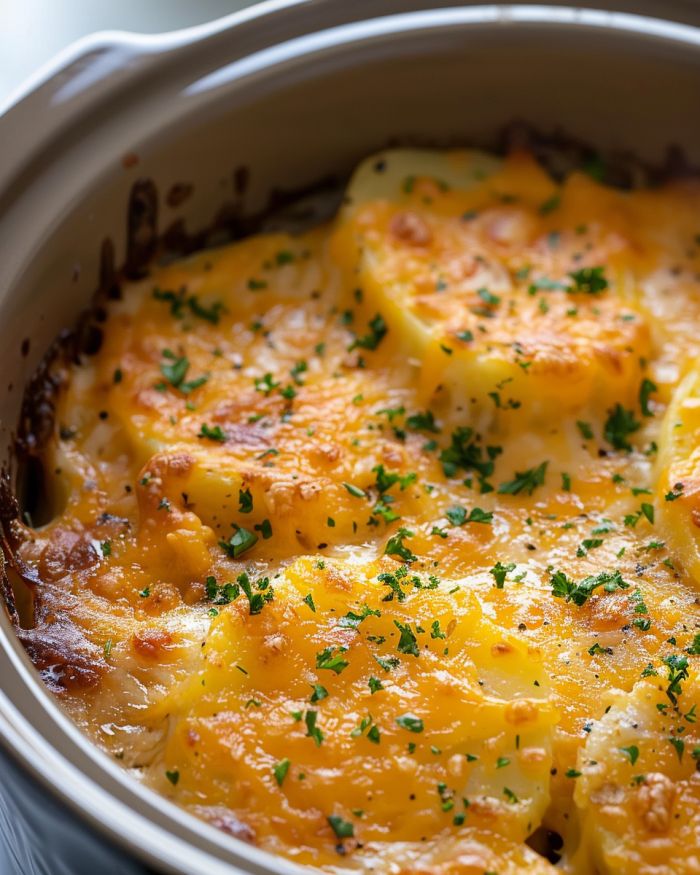Scalloped potatoes, a dish that brings comfort and warmth to any table, has its origins deeply rooted in French cuisine, known there as gratin Dauphinois. Traditionally, this dish is baked, but I’ve taken the liberty to adapt it for the slow cooker, ensuring it fits perfectly into our busy lives while still providing that slow-cooked taste and tenderness. Adding garlic and cheddar brings a boldness to the recipe, combining the creamy texture of the potatoes with sharp and aromatic flavors that delight the palate. Perfect for those seeking a side dish that is both delicious and straightforward, these garlic cheddar scalloped potatoes are a must-try.
This dish pairs wonderfully with a variety of mains: from roasted meats, such as beef or chicken, to a simple green salad for a lighter meal. The richness of the potatoes is beautifully complemented by the savory notes of roasted vegetables or even a fresh, crisp side salad to balance the meal.
Advertisement
Garlic Cheddar Scalloped Potatoes
Serving Size: 6 servings
Serving Size: 6 servings

Ingredients
– 2 lbs of Yukon Gold potatoes, thinly sliced
– 1 medium onion, thinly sliced
– 3 cloves of garlic, minced
– 1 cup of grated sharp cheddar cheese
– 1 cup of heavy cream
– 1/2 cup of chicken or vegetable broth
– Salt and pepper to taste
– 1 teaspoon of fresh thyme, chopped (optional for garnish)
– 1 medium onion, thinly sliced
– 3 cloves of garlic, minced
– 1 cup of grated sharp cheddar cheese
– 1 cup of heavy cream
– 1/2 cup of chicken or vegetable broth
– Salt and pepper to taste
– 1 teaspoon of fresh thyme, chopped (optional for garnish)
Directions
1. Start by layering half of the sliced potatoes in the bottom of a slow cooker.
2. Next, add a layer of half the onions and garlic, sprinkling lightly with salt and pepper.
3. Sprinkle half of the grated cheddar cheese over the onions and garlic.
4. Repeat the layering process with the remaining potatoes, onions, garlic, and cheese.
5. In a small bowl, mix the heavy cream and broth together, then pour this mixture over the layered potatoes in the slow cooker.
6. Cover and cook on low for 6-8 hours or on high for 3-4 hours, until the potatoes are tender.
7. Once cooked, if desired, sprinkle with fresh thyme for garnish before serving.
Variations & Tips
Continue Reading in next page

